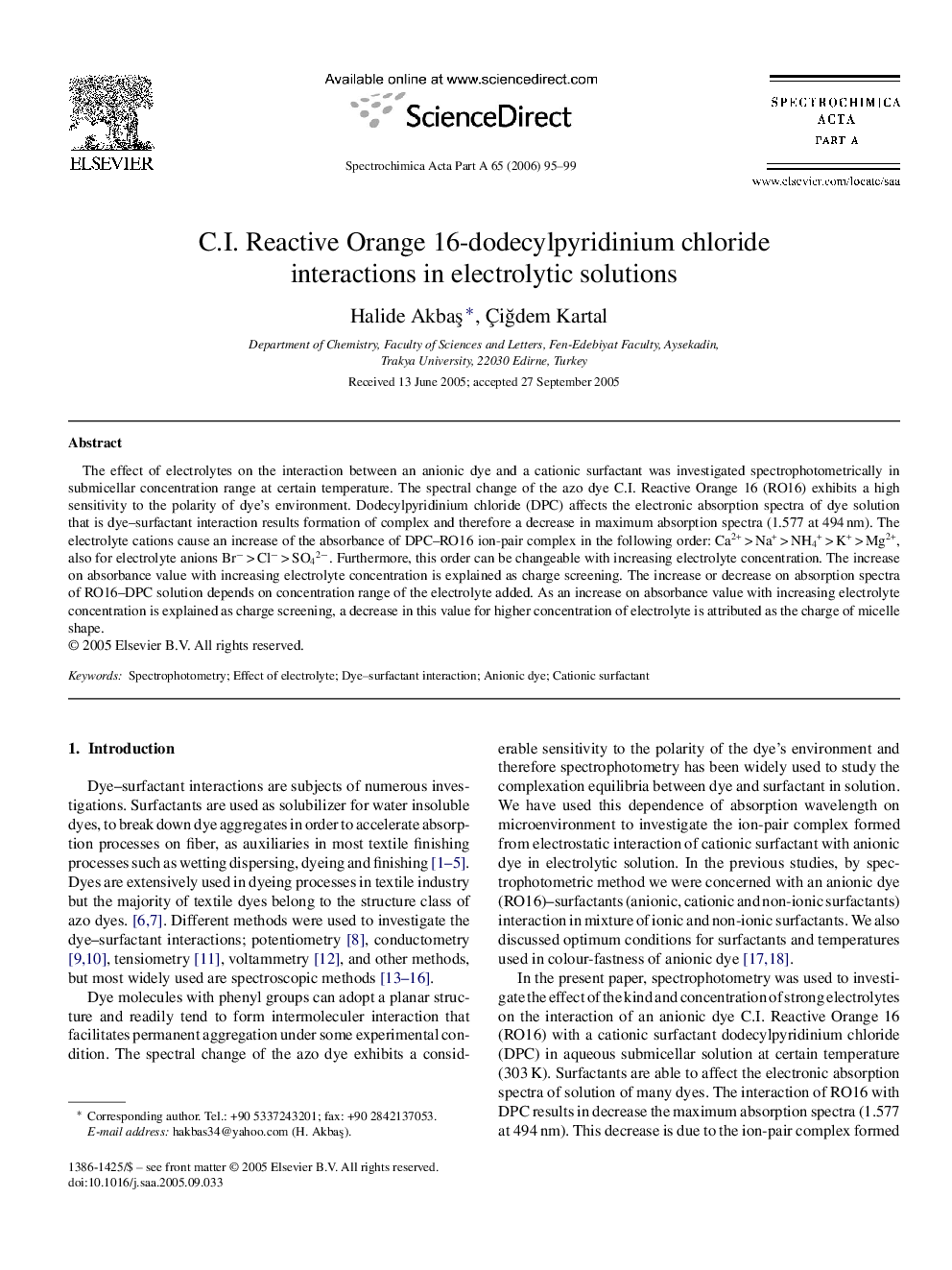| Article ID | Journal | Published Year | Pages | File Type |
|---|---|---|---|---|
| 1236215 | Spectrochimica Acta Part A: Molecular and Biomolecular Spectroscopy | 2006 | 5 Pages |
The effect of electrolytes on the interaction between an anionic dye and a cationic surfactant was investigated spectrophotometrically in submicellar concentration range at certain temperature. The spectral change of the azo dye C.I. Reactive Orange 16 (RO16) exhibits a high sensitivity to the polarity of dye's environment. Dodecylpyridinium chloride (DPC) affects the electronic absorption spectra of dye solution that is dye–surfactant interaction results formation of complex and therefore a decrease in maximum absorption spectra (1.577 at 494 nm). The electrolyte cations cause an increase of the absorbance of DPC–RO16 ion-pair complex in the following order: Ca2+ > Na+ > NH4+ > K+ > Mg2+, also for electrolyte anions Br− > Cl− > SO42−. Furthermore, this order can be changeable with increasing electrolyte concentration. The increase on absorbance value with increasing electrolyte concentration is explained as charge screening. The increase or decrease on absorption spectra of RO16–DPC solution depends on concentration range of the electrolyte added. As an increase on absorbance value with increasing electrolyte concentration is explained as charge screening, a decrease in this value for higher concentration of electrolyte is attributed as the charge of micelle shape.
